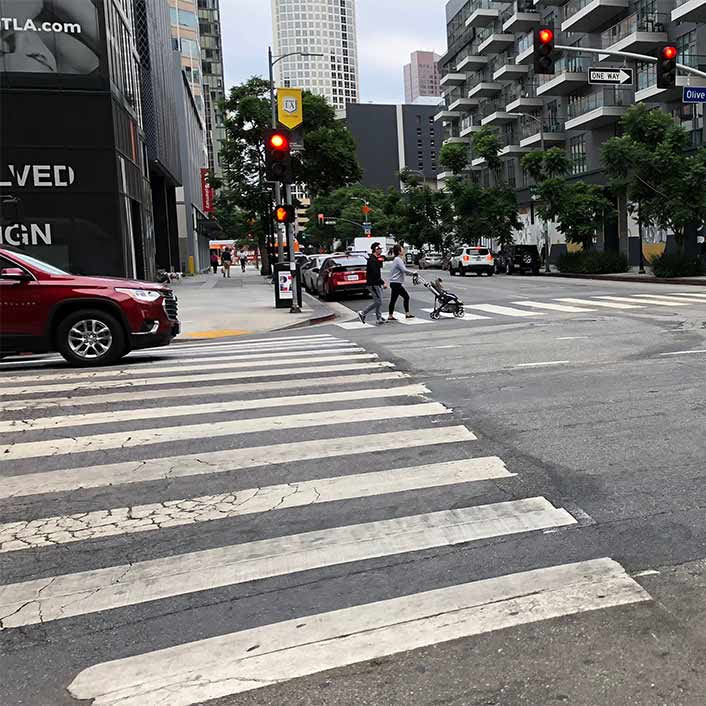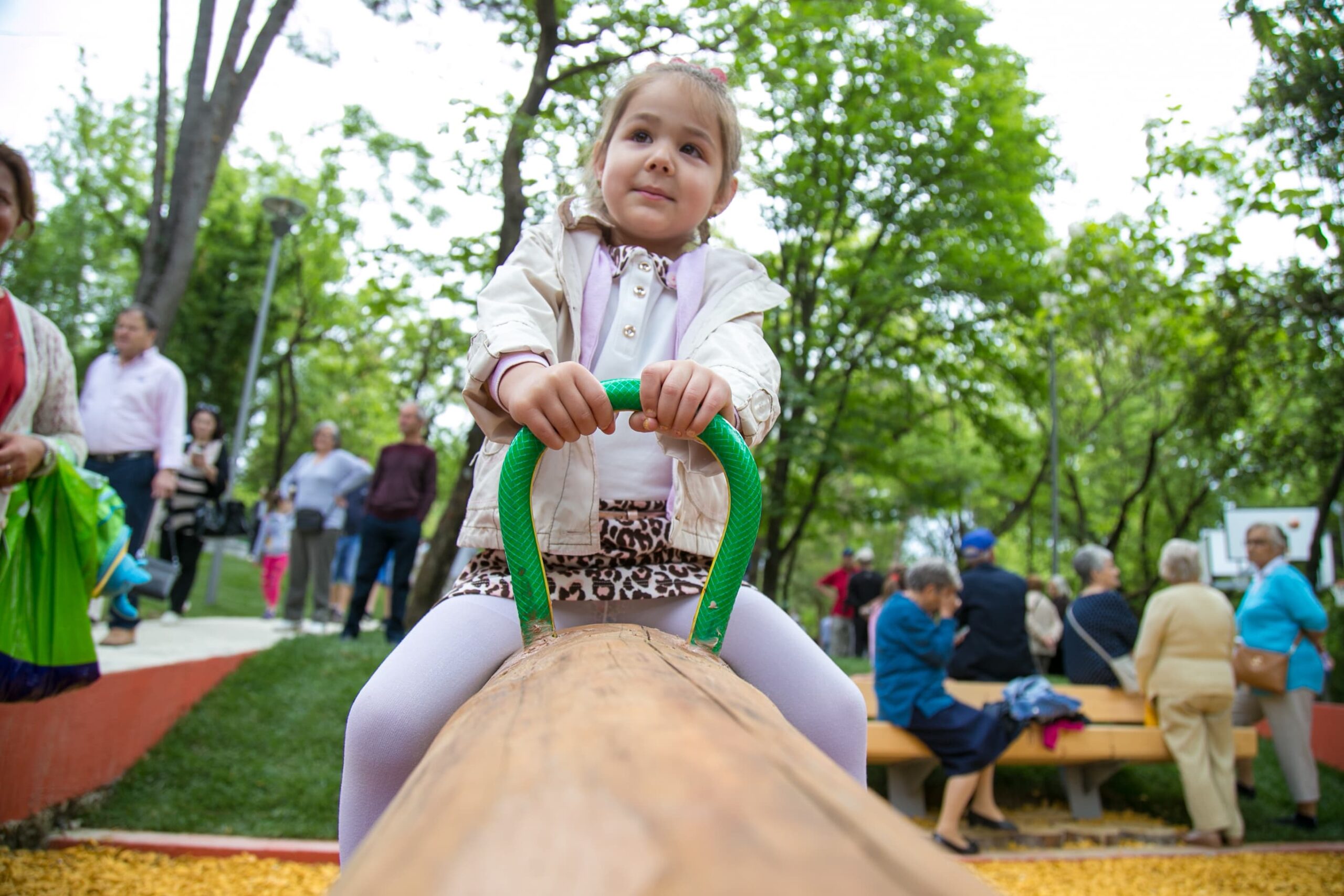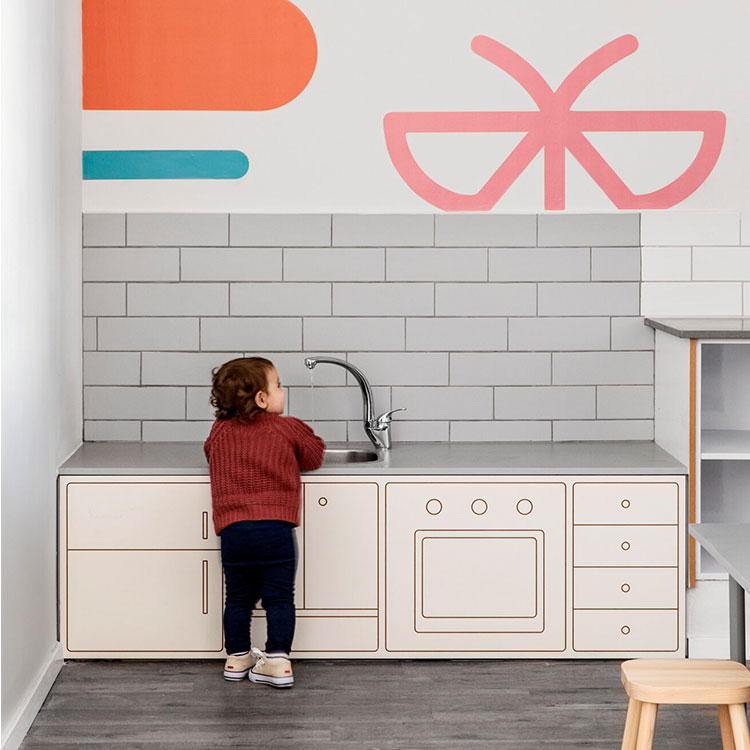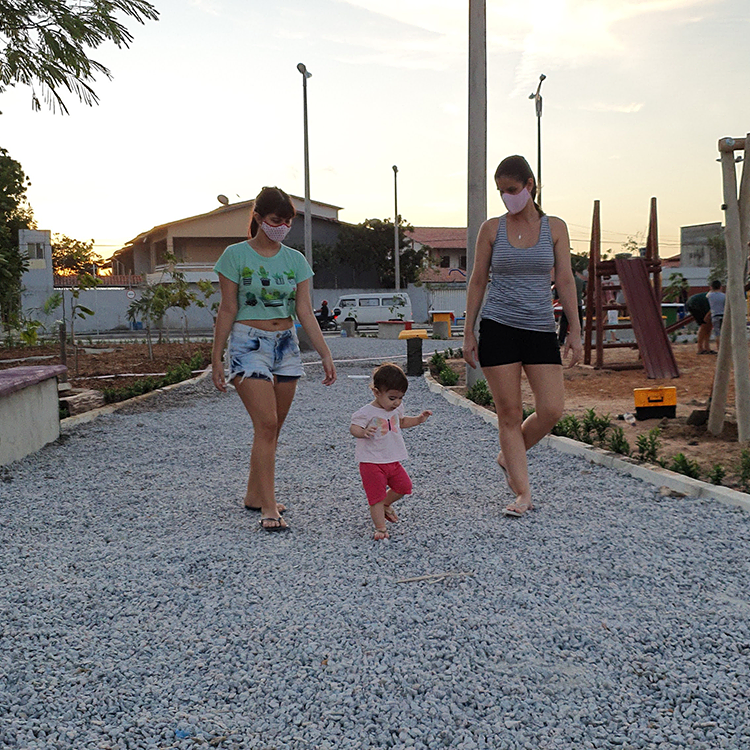As I mentioned in my earlier post on the Bernard van Leer Foundation’s Urban95 initiative, a group of experts in the fields of early childhood development, mobility, transportation safety, public space, urban form, recreation and air quality gathered at the Urban95 Expert Assembly in Downtown Los Angeles (DTLA) last autumn, preceding the National Association of City Transportation Officials (NACTO) Designing Cities Conference.
On its surface, our meeting location of DTLA seemed like an odd choice: a Southern California neighbourhood known more for its office buildings and car culture than its livability. Our first observations of DTLA did not scream “what a great place to raise a young kid!” However, DLTA is undergoing a transformation that presents it with an unique opportunity to mature into an urban centre that supports child- and family-friendly mobility. Let’s look at it from the standpoint of five key aspects of the Urban95 agenda.
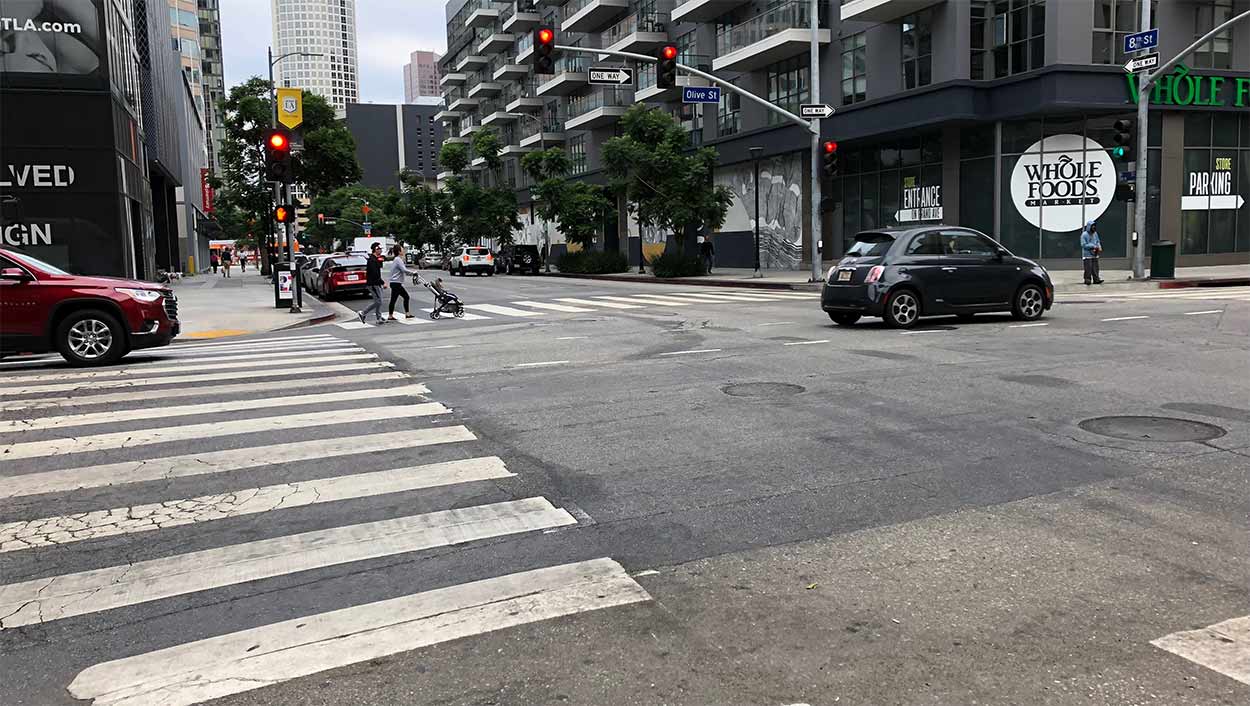
1. Place services that matter to young children and their caregivers within a 15-minute walk of where they live
- A brief search for pediatricians, general physicians, schools, markets and park space on Google Maps in DTLA shows that these services are limited, particularly public playgrounds, green park space and pediatricians. At the NACTO Designing Cities Conference in October, Los Angeles Mayor Eric Garcetti noted there is significant residential growth occurring in DTLA. The neighbourhood currently has 75,000 residents, up from 10,000 just eight years ago, and is estimated to grow to 175,000 by 2040. Given this projected development, there is an opportunity now to identify and address these gaps through conscious planning for family-friendly mobility.
2. Make it safe, comfortable and appealing for caregivers and young children to walk or cycle
- City of LA Council member Jose Huizar (District 14) stated at the conference that DTLA is prioritising walking, bicycling and scootering. Several recently completed projects reflect the effort to make pedestrian, bicycle and transit travel more efficient, safe and enjoyable, such as protected bike lanes along Spring Street and Figueroa. However, continued education and enforcement now needs to follow the installation of these protected bike lanes to keep the space unobstructed and safe for bicycles.
- The Los Angeles Police Department is rolling out a pedestrian safety initiative that focuses on handing out reflective gear, lights and warnings (rather than citations) to pedestrians who cross the street outside of crosswalks. LAPD could strengthen this initiative even further by learning more about the local and personal contexts that may lead individuals to cross outside of unmarked and marked crosswalks. For women traveling with (and without) young children, personal safety concerns and the unreasonable distance between crosswalks on many Los Angeles city blocks are two important factors for LAPD and LADOT to consider as they address pedestrian behaviour and safety.
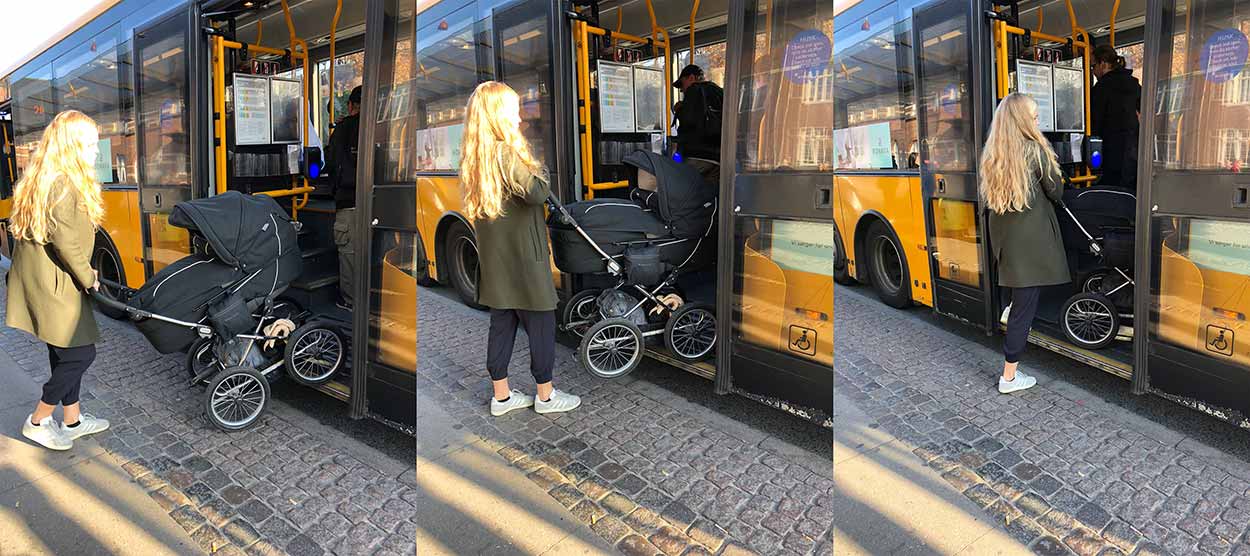
3. Make public transport more safe, comfortable, affordable and appealing for caregivers and young children
- A recent study of transportation costs in New York City found that women, and particularly women with young children, had higher transportation expenses. The potential factors driving up that cost – time and access constraints and safety concerns – are not unique to NYC transport.
- In 2016, the LA region voted to tax itself in perpetuity to support transportation improvements (Measure M). This funding is dedicated to expanding and improving transit, rail, local roads, highways, sidewalks and bicycle lanes, along with programming to keep Metro fares affordable for seniors, persons with disabilities and students. Given the aforementioned findings on increased transportation costs of women and opportunities afforded under the Measure M funding, Metro should consider the needs of women caregivers with (and without) young children in current and future programming and service delivery efforts like the NextGen Bus Study.
- Metro has recently implemented an all-door boarding programme on two of its busiest bus lines to expedite boarding and transit travel times. Boarding with strollers or prams is never an easy task but could be easier at doors in the middle or back of buses. Expanding this programme system-wide could reduce the time it takes to board with a stroller or pram and increase the comfort and appeal of transit to caregivers travelling with young children.
- In relation to this, prominent wayfinding to help guide a caregiver travelling with a stroller or pram on public transport through a station and the boarding process can increase the comfort and appeal of transit.
4. Turn urban travel into moments for play and interaction between caregiver and child
- Murals or street art are present in many locations in DTLA and add interest to the street environment. A street art programme focused on installations at the height of a child (the 95cm of Urban95!) along the pedestrian environment and at locations where caregivers would like to keep children engaged (e.g. a bus or light rail stop) could enhance the environment for families.
- The construction underway in DTLA is an opportunity to think about how people move through and between spaces, and how inviting and safe those spaces are. Are these public spaces, or publicly accessible spaces? Who is the space designed for, or is it designed at all? The space between buildings can be passive or active, serving as a place of refuge and/or play removed from a noisy and crowded street environment, and/or as pedestrian shortcuts, providing safer, quieter and/or playful paths for caregivers travelling with children.
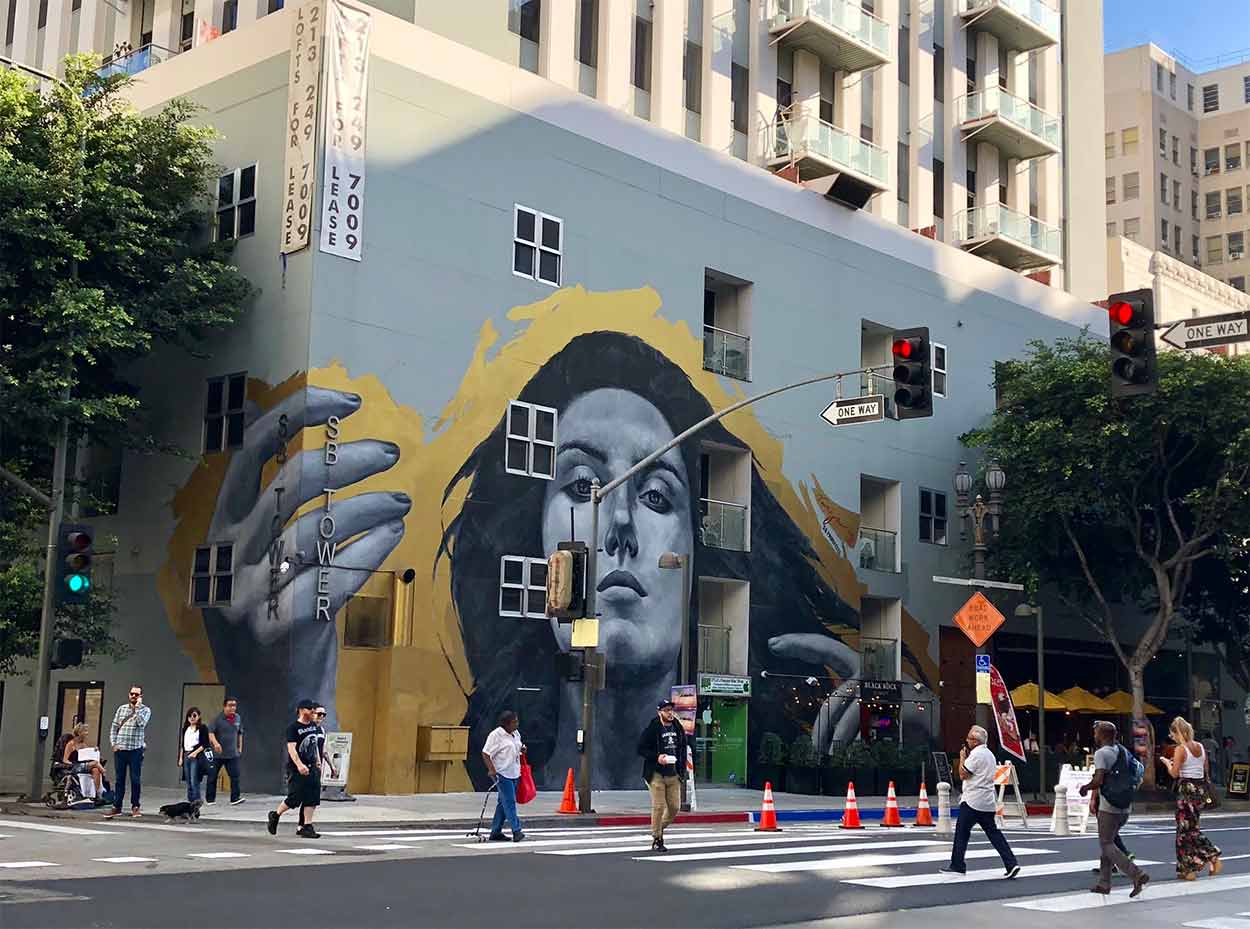
5. Protect young children from air pollution and traffic crashes
- Traffic collisions are the leading cause of death in the City of Los Angeles for those between 2 and 14 years old and the number two cause of premature death among those between 15 and 25 years old.1
- The data is quite straightforward on the role that speed plays in the severity of injury in traffic collisions, and the increased vulnerability of small children. However, the City of Los Angeles recently increased the speed limit on over 100 miles of LA surface streets. This change is the result of an outdated car-centric state-level policy that requires cities to post speed limits determined by traffic flow rather than traffic safety. The counter-intuitive policy is largely dependent on enforcement rather than design to reduce speed and the risk of fatal or severe traffic injuries.
- Design is a primary component in the city’s Vision Zero programme to reduce fatal and severe traffic crashes by 2025, and will be critical for the city to support in order to meet the safe mobility needs of young children and their caregivers.
- The data on children’s exposure to air pollution and subsequent health outcomes in Los Angeles is better. A study by University of Southern California researchers found that particulate matter 2.5 (PM 2.5) dropped by 47 percent from 1992 to 2011 in several areas in the Los Angeles region. The researchers found that children with asthma were 32 percent less likely to suffer from bronchitis symptoms, and children without asthma experienced a 21 percent reduction in these respiratory problems. The air quality improvements were attributed to several policy and programming changes in the region, including vehicle emission programmes.
Political will is a sixth unspoken and necessary aspect of the Urban95 agenda. There are many leaders in LA who envision a more liveable DTLA, including Los Angeles Department of Transportation General Manager Seleta Reynolds. GM Reynolds, who presented to the Urban95 Expert Assembly, recognises the direct and indirect components of successful transportation systems, and has a willingness to provide funding support for both. Additionally, her lived experience as a caregiver expands the lens through which she views the needs and opportunities present in components of LA’s transportation system. As DTLA grows and evolves, this experience and leadership will be vital to bring the mobility needs of young children and caregivers to the table and keep them there.
 Author: Dr. Tracy McMillan is a Senior Policy and Project Analyst at the University of California, Berkeley SafeTREC. Tracy has worked at the intersection of public health and transportation planning and policy for over 15 years, with a focus on transportation safety, mobility and active community environments for children/youth and older adults. She holds a Ph.D. in Urban and Regional Planning from the University of California, Irvine; a Masters in Public Health from Emory University; and a Bachelor’s degree in Exercise Science from SUNY Buffalo. Tracy lives in the San Francisco Bay area with her family and enjoys exploring places by foot, bike and transit.
Author: Dr. Tracy McMillan is a Senior Policy and Project Analyst at the University of California, Berkeley SafeTREC. Tracy has worked at the intersection of public health and transportation planning and policy for over 15 years, with a focus on transportation safety, mobility and active community environments for children/youth and older adults. She holds a Ph.D. in Urban and Regional Planning from the University of California, Irvine; a Masters in Public Health from Emory University; and a Bachelor’s degree in Exercise Science from SUNY Buffalo. Tracy lives in the San Francisco Bay area with her family and enjoys exploring places by foot, bike and transit.
